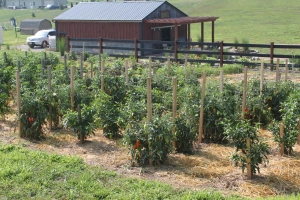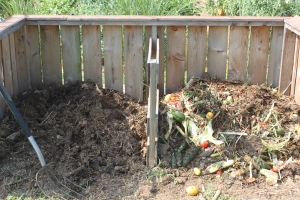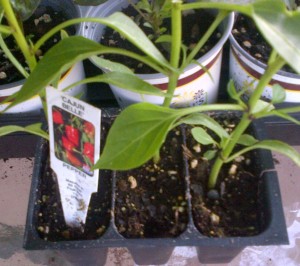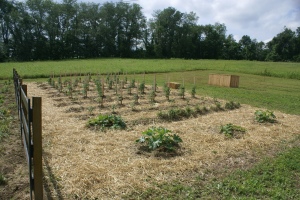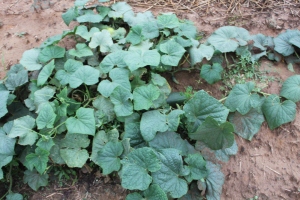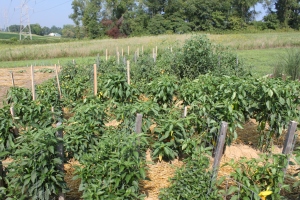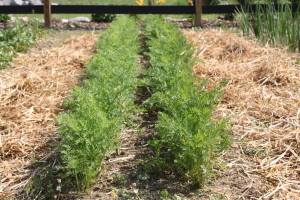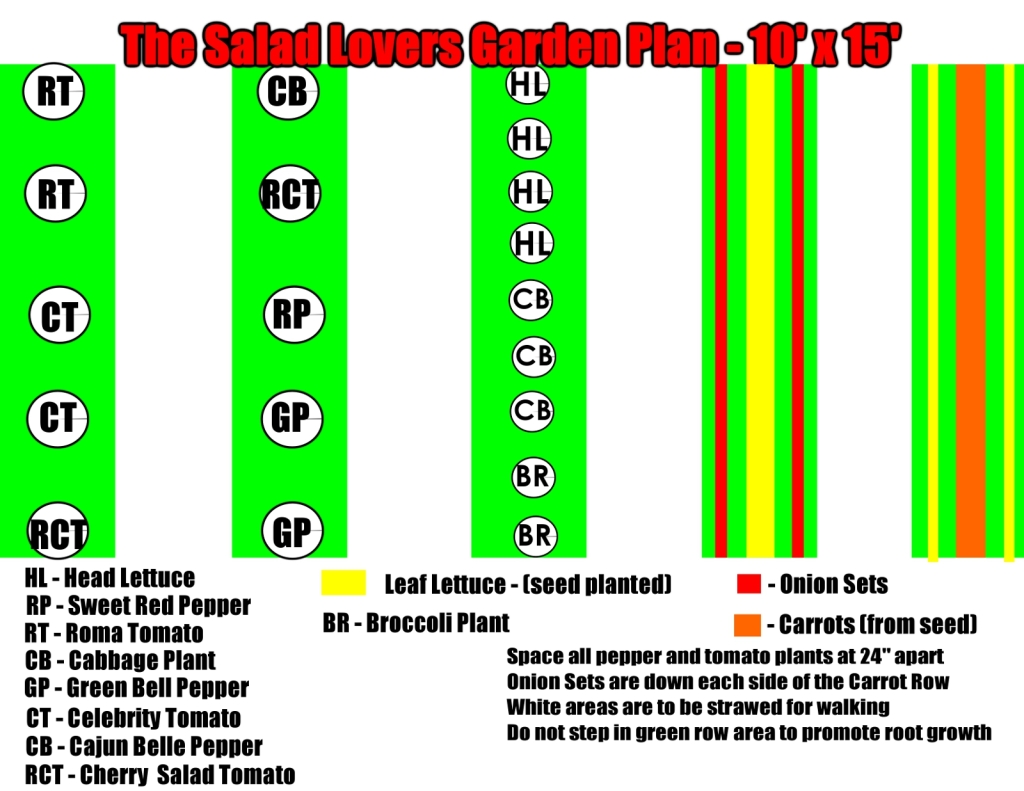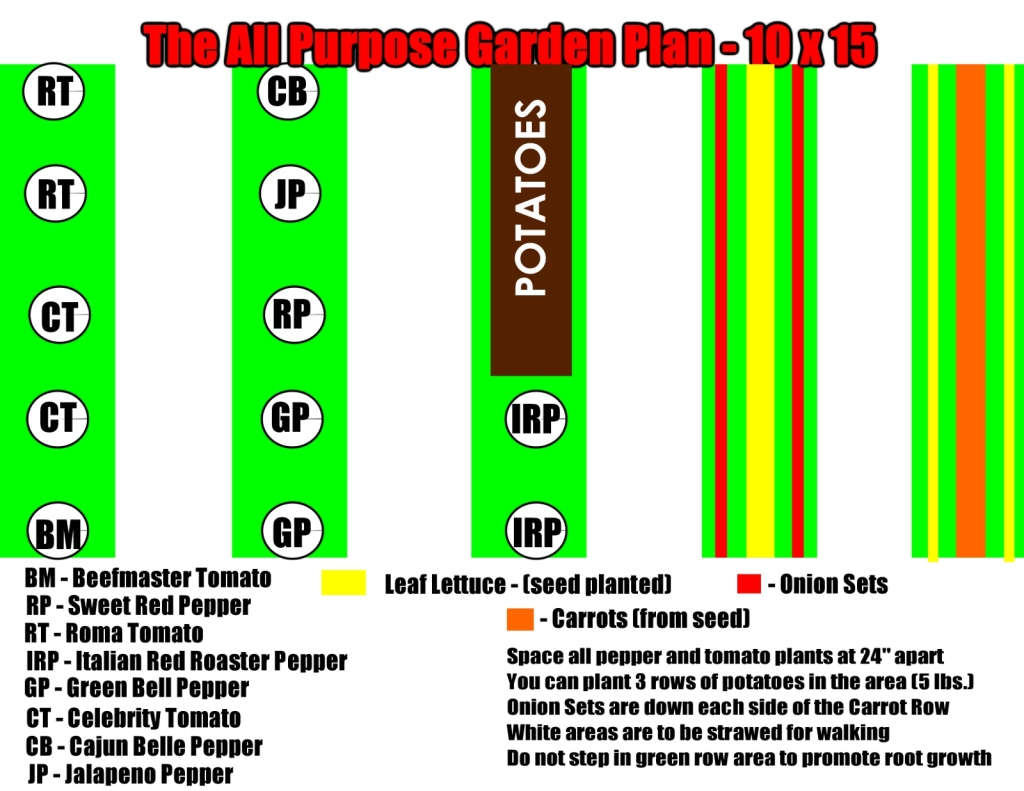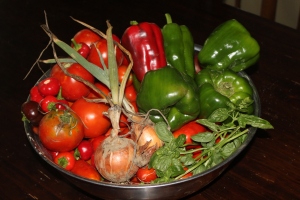PART 3 of 4: Today is the 3rd part of our four-part series on how to plant a simple garden using raised row beds. Over the course of the four weeks, we will take you through the process of how we plan, plant, care and maintain our raised row garden – and how to create your own simple garden in your yard. If you missed the previous weeks (part 1&2) – you can click on the highlighted text below to view.
1. Growing Simple – Raised Row Gardening – Click Here For Part 1
2. Preparing And Planting The Garden – Click Here For Part 2
3. Maintaining The Garden Through The Season
4. Keeping Your Beds Productive
Maintaining The Garden Through The Season:
So you have your raised row beds all built – and your ready to plant! The sky really is the limit for what you want to grow. The real key is in how you plant and maintain your crops. At the bottom of this post, to help with some ideas, we have included 3 simple garden plans for a salsa, pasta sauce, and all-purpose garden. Once your garden is planted – you will be amazed at how little you need to work in it each day to keep it looking great. If you simply spend 5 to 10 minutes a day in the garden – walking the rows and pulling a few weeds here and there in the planting rows – it will stay amazingly clean with little effort. Your reward will be great tasting vegetables for you and your family. But for now – here are the real keys for success in planting and maintaining your raised row garden beds:
PLANTING:
Plant spacing is critical for the overall success of whatever you plant. As a general rule of thumb – I like to plant my main plants (tomatoes, peppers, cucumbers, etc.) about 24″ on center between each plant. That’s enough room to easily work around the plants and to allow for good plant growth. When you plant – spread the topsoil aside and plant the small plants directly into the straw below. With a raised row bed – the straw and topsoil act as a great moisture retainer for the plant’s roots, and allow them to spread and grow quickly. As the roots grow into the straw – they will go even deeper in to the loosened soil and give great results! As we plant into the hole – we will fill in with a little more topsoil, or even better, compost at the bottom of the hole, mixed into the straw layer. Then fill in around the entire plant with the topsoil and gently press the soil – making sure to just easily depress the soil around the surface soil so the plant is in place. One thing that Mary and I do at this point before we mulch the plant – is to create a little 1/2 to 1″ deep circular depression about 3 to 4″ around the plant. Why? it makes it easier when you are watering to allow the water to soak in around the root zone and not run off. Once that is done – we will mulch with about an 1″ of compost covering up right around the 3 to 4″ depression. If you do not have compost – you can certainly use shredded leaves or straw – but use something to keep the soil covered around the plant.
For planting seed portions of the bed – such as lettuce, carrots, peas, etc. – plant right into the topsoil that is above the straw. Just use your finger or a hoe to make a small depression in the topsoil and spread the seeds according to the package, and cover. I do not mulch my seed crops, allowing for them to germinate and come up through the soil. Once our peas and green beans come up – I will then put down a 1/2″ layer of mulch around the plants.
Make sure you gently break apart the root ball when you pull a plant out of your container. It allows the roots to expand more rapidly into the new soil. Don’t break it completely apart – just gently loosen the tightly wound root ball to give it room to expand. One final tip – it’s very important to provide some support for your tomatoes and for your peppers as they grow to keep them off the ground. Whether you stake, use a cage, or use a combination like we do – (Stake-A-Cage) get them supported early!
Once you have your garden planted – now comes the time to mulch and water.
MULCH YOUR PLANTS
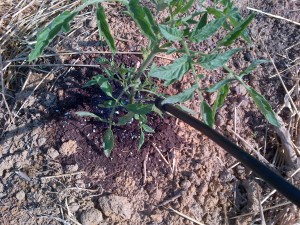
We use compost around our plants as mulch – it helps retain moisture and adds nutrients to the plants
It doesn’t matter if it’s a pepper, cucumber, or tomato plant. Applying a healthy amount of mulch around the base of the plant really helps. It helps the soil temperature around the plant stay regulated and helps keep out weeds that compete for nutrients. It also helps hold in the water to the plants when it rains or when watering.
What to use as a mulch? Old grass clippings, shredded leaves, finished compost or straw work great. We have used all at one point or another – but have really settled on the compost. Not only is it great at building your soil up and retaining moisture – it also serves as a bit of organic fertilizer to the plants every time it rains leaching the composted nutrients into the soil and into your plants. If you are new to gardening and don’t yet have large amounts of compost on hand – don’t worry – the straw, grass or shredded leaves work great as a mulch.
MULCHING YOUR WALKING ROWS
Make sure you apply a healthy 3″ to 6″ of straw or shredded leaves to your walking rows. It keeps the weeds suppressed – and by covering the bare dirt – you are preventing blowing weed seeds from getting a start in your garden. This is a huge time saver and keeps weeding and the time you spend in your garden to a minimum. When we do get a few weeds starting to pop through – we will run the weed-eater through the walking rows and cut them to the ground – then apply another heavy layer of mulch. We do this about once a month through the season.
WATERING – THE KEY TO IT ALL!
This may be the most important part of the equation for a garden’s success. Just remember 3 things when it comes to watering that make it simple. WHEN, HOW and HOW MUCH.
WHEN:
Watering in the early morning is best – before the sun has a chance to really get hot. Water at the base of the plants and let it soak in. If you water in the afternoon – you not only run the risk of burning the leaves from the sun scorching the water that may hit the plant – but you lose a lot more to evaporation than watering in the early morning. Besides your beer or favorite beverage gets so much warmer in the hot sun 🙂
HOW:
Water slowly and at the base of each plant. Let it soak in and come back a few times and apply smaller amounts that soak right in where it’s needed most at the root level of the plant. Spraying the whole garden with a big hose and spray nozzle can lead to a lot of problems besides just scorching plants . Problems like damaging plants, destroying the blooms that create the vegetables with too hard of a spray, or helping fungus and rot develop on wet moist leaves may occur. We actually use old milk jugs when the plants are small to water our plants. We can water our entire garden (over 125 plants) with about 6 to 8 gallons the first few weeks. The first week is the most dangerous for your plants – if you have hot weather – you may need to water each day – but water slow and easy.
HOW MUCH:
Too little water and they shrivel up. Too much water and they won’t develop the good and deep root structure needed for big plants. A good rule of thumb is that a garden plant typically needs to receive about 1 inch of water a week. If mother nature isn’t supplying that – then you need to supplement. What most don’t say is that the 1″ of water shouldn’t come all at once. If you are experiencing a prolonged dry spell – water every two to three days with about a 1/2″ of water to the plant at a time. This allows enough water to go deeper into the soil and build deeper roots – but gives the plants more consistent watering. Why not every day you might ask? If you water every day – the plants will never send their roots deeper looking for water – and you end up with much less hardy and developed plants. Call it tough love watering to develop stronger plants – but it works.
Stay Off Your Bed Rows!
Whether you have raised beds, raised rows, regular rows, or just a few simple garden plants tucked in to your flowerbed or small space – don’t walk near them. When you compact the area around a plant with big soil clogging foot prints and heavy foot traffic – it really does make it harder for the plant to grow bigger roots. Less roots = less ways for the plant to soak up the valuable water and nutrients from the soil that benefit the plant. It’s one reason raised beds and container gardens can be so effective – but even if you don’t have them – you can make a huge difference just by staying off the ground around your plants.
What about fertilizer?
This is such a touchy topic for many. The simple answer is this – if you have healthy soil – and you amend it each year with lots of compost and shredded leaves and organic matter or cover crops – you really have no need for it. If you want to keep your garden free of synthetic fertilizers but your plants need a boost – you can make a great natural liquid fertilizer by soaking fresh compost in water – and watering your plants with it. Like with any fertilizer – you want to avoid hitting the leaves directly as it can burn them – instead, water the soil around the roots of the plants. It’s a great way to give a boost to your plants naturally.
Below you will find our 3 simple plans for some 10′ x 15′ garden layouts. They can be used as is – or-make them your own and substitute plants that you want to grow and eat. Next week, in the final segment called “Keeping The Beds Productive” – we will cover the final topics in raised row beds: Amending your soil, rotating your crops, and planting cover crops over the winter to build super soil.
If you would like to follow along with the series and receive our DIY and Gardening Post each week – be sure to sign up to follow our blog via email, Twitter or Facebook in the right column.
– Jim and Mary
3 SIMPLE GARDEN PLANS
Protect your plants by planting after the recommended last frost date in your area – we usually get our plants in the ground here in Ohio around mid-May. Seed crops like lettuce, cilantro, peas, radishes, carrots, and onion sets can be seeded earlier– they both prefer the cool weather and can handle a light frost as they emerge. We usually will plant a second set of those crops in late summer / early fall – as many cool weather crops bolt and die off in the summer heat.

